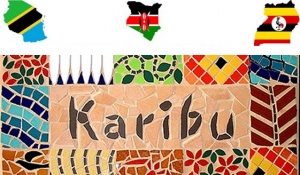Difference between revisions of "Language/Swahili-individual-language/Grammar/Plurals"
m (Quick edit) |
m (Quick edit) |
||
| Line 50: | Line 50: | ||
<br><hr>If you have any questions, please ask them in the comments section below.<br>Feel free to edit this wiki page if you think it can be improved. 😎 | <br><hr>If you have any questions, please ask them in the comments section below.<br>Feel free to edit this wiki page if you think it can be improved. 😎 | ||
==Related Lessons== | |||
* [[Language/Swahili-individual-language/Grammar/Future-Tense|Future Tense]] | |||
* [[Language/Swahili-individual-language/Grammar/Conditional-Mood|Conditional Mood]] | |||
* [[Language/Swahili-individual-language/Grammar/Tenses|Tenses]] | |||
* [[Language/Swahili-individual-language/Grammar/Negation|Negation]] | |||
* [[Language/Swahili-individual-language/Grammar/Pronouns|Pronouns]] | |||
* [[Language/Swahili-individual-language/Grammar/Adjectives|Adjectives]] | |||
* [[Language/Swahili-individual-language/Grammar/Questions|Questions]] | |||
* [[Language/Swahili-individual-language/Grammar/Nouns|Nouns]] | |||
{{Swahili-individual-language-Page-Bottom}} | {{Swahili-individual-language-Page-Bottom}} | ||
Revision as of 22:54, 25 February 2023
Welcome to the Swahili grammar lesson on plurals! In this lesson, we will be exploring the rules and conventions of forming plurals in Swahili. We will also look at some examples of how to use plurals in a sentence.
Overview
Swahili is a Bantu language spoken by over 50 million people in East Africa. It is the official language of Tanzania, Kenya, Uganda, and the Democratic Republic of Congo. Swahili has a rich and complex grammar system, and one of the most important aspects of this system is the formation of plurals.
In Swahili, there are two main ways to form plurals: by adding a suffix to the end of the word, or by changing the word's stem. Let's take a closer look at each of these methods.
Suffix Plurals
The most common way to form plurals in Swahili is by adding a suffix to the end of the word. The suffix used depends on the type of noun being pluralized. For example, the suffix "-mi" is used for nouns that refer to people, while the suffix "-zi" is used for nouns that refer to animals.
Here are some examples of suffix plurals:
- mtu (person) → watu (people)
- nyoka (snake) → nyoka (snakes)
- kitabu (book) → vitabu (books)
Stem Plurals
Another way to form plurals in Swahili is by changing the stem of the word. This method is used for nouns that refer to objects or abstract concepts. For example, the stem of the word "kitabu" (book) can be changed to "vitabu" to form the plural.
Here are some examples of stem plurals:
- kisu (knife) → visu (knives)
- ujuzi (skill) → vijuzi (skills)
- mfano (example) → mifano (examples)
Examples
Now that we have looked at the rules for forming plurals in Swahili, let's look at some examples of how to use them in a sentence.
- Wazazi wanafunzi wengi. (Many parents have many children.)
- Nyumba zinazidi kuongezeka. (The houses are increasing.)
- Miti yanayo maua. (The trees are bearing fruit.)
- Viatu vinavyoonekana. (The shoes are visible.)
Conclusion
We have now looked at the rules and conventions of forming plurals in Swahili. As you can see, it is a relatively simple process, but it is important to remember the different suffixes and stems that are used for different types of nouns. With practice and dedication, you will soon be able to form plurals with ease!
If you want to learn more about Swahili grammar, why not join the Polyglot Club community Polyglot Club? You can connect with other language learners and get tips and advice from experienced polyglots like Benny Lewis.
If you have any questions, please ask them in the comments section below.
Feel free to edit this wiki page if you think it can be improved. 😎
Related Lessons
